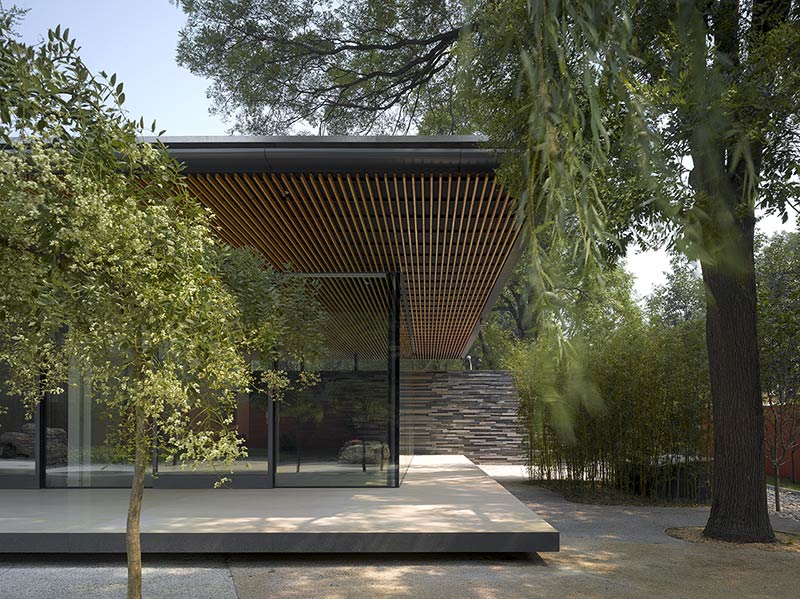
The Ambassador’s residence in Beijing houses three functions: space for official functions, a service area and private area. Because of the relatively large site (4220 m²) it was possible to create a single-storey building with direct access to each function without jeopardizing the privacy of the living quarters. Hence, the domestic character of the ‘home’ doesn’t suffer from the official/presentation function. The typology of the design is that of a large and luxurious detached house.
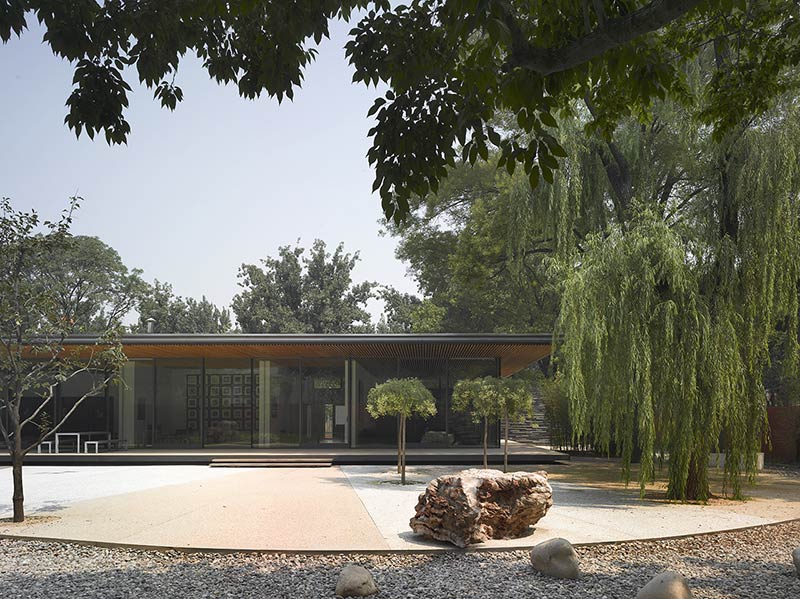
The building has two wings: one contains the meeting and dining rooms and the service area, the other houses the private quarters. Each wing has its own orientation towards the garden. Both wings are connected by a winter garden. This space offers a permanent representation of nature (and proof of the Dutch ability to keep that nature under a glass roof), shielded from the extremes of the Beijing climate.
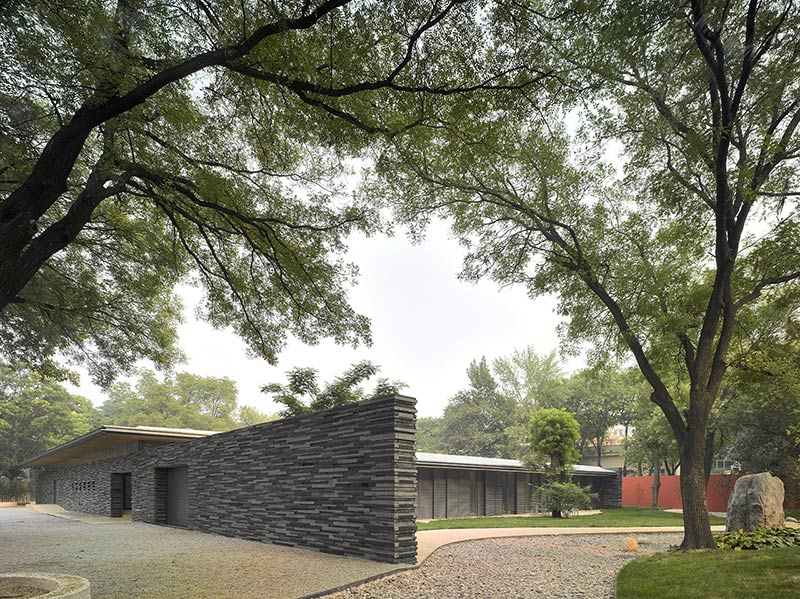
A large entry gives access to the official part of the building, with a direct view through the building into the garden. It is possible, however, to receive guests in the official wing without revealing the rest of the house. Ample room is given to the ritual of welcoming guests, collecting coats, presenting the guestbook, etcetera. From the entrance hall, a large reception room facing east, a small and intimate ‘salon’ and a large dining room can be reached. The large cantilevered roof protects the interior from direct sunshine in the hot season, and provides a dry terrace in case of rainfall.
In the private wing the kitchen and the main room are the central spaces in a linear plan. The three bedrooms are situated at the far end for maximum privacy. On special occasions, the ambassador can take a guest through the winter garden to his study/library in the private wing.
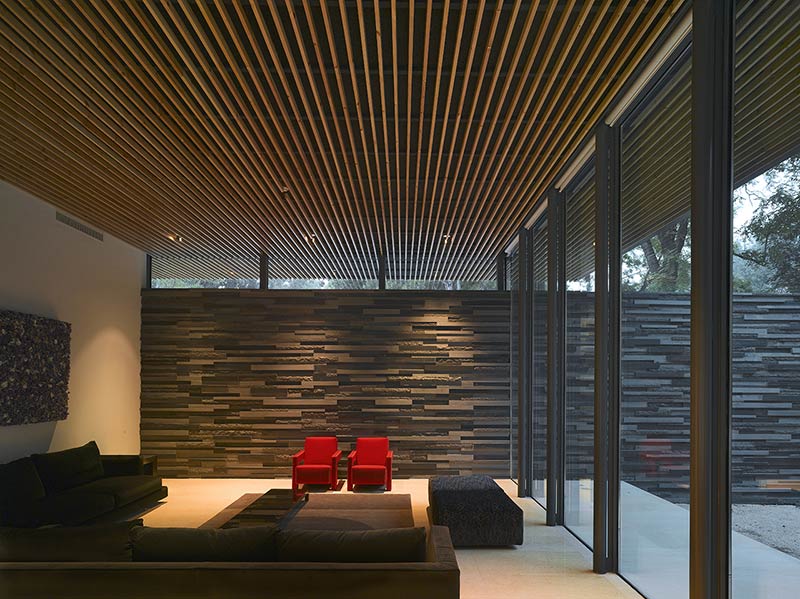
The main expression of the house is dominated by an elongated wall that stretches beyond the building itself. The wall is made of horizontal strips of natural stone of different dimensions, and has strips of lighting integrated into it. The entry is shielded by a large pane of glass. The garden elevation consists of structural glazing and specially designed, solitary sliding doors. The private wing is enclosed by a stone wall. On the west side the rooms open up towards the private garden. Louvers provide sun-shielding and privacy. The horizontal articulation enhances the sense of spaciousness, and counters the verticality of the trees.
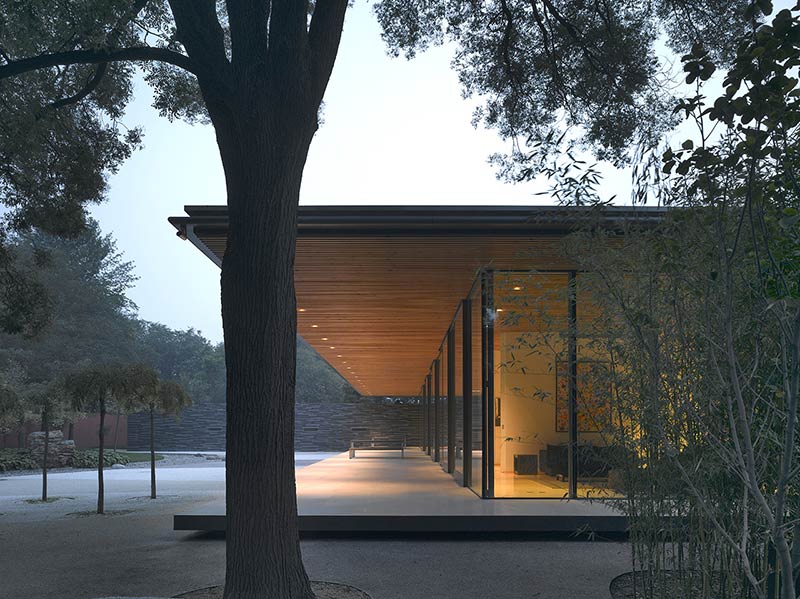
The garden is a crucial part of the design. In Beijing, the garden needs to survive visually during the cold, dry winter, while providing a place of tranquillity in other seasons. In contrast to the geometric design of the house, the garden is a ‘dry river’ made up of several layers of materials: grass, gravel, boulders and concrete with different aggregates, perforated by flower beds, trees, bamboo and green bushes. The existing trees were welcomed as valuable assets and have been integrated into the garden. Most plots in the second diplomatic district have a 2-metre-high perimeter wall. Instead, we aimed to make the house welcoming, open and expressive – as aspects of presentation. Therefore the wall is broken up on two sides and replaced by a fence with minimal visual impact.
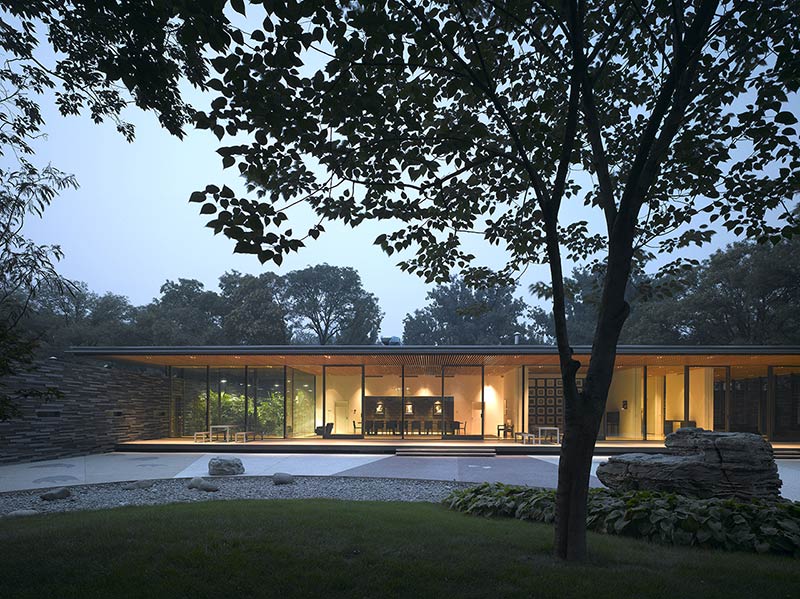
In the middle of the driveway there is an island of trees, with a work of Sjoerd Buisman: the trees are decorated with ‘clones’ of aluminium branches, called ‘presents to the trees’. At night the dark granite wall reveals strokes of colour. Both the entry and the winter garden emanate light, welcoming the visitors.
The Beijing residence has taught us to review our ‘tools’, to achieve in a different context the same architectural aims: transparency, counter-gravity, expression of materials, silence.
Project Details:
Location: Beijing, China
Area: 900 sqm
Architects: Kraaijvanger
Team: Dirk Jan Postel, Karin Wolf, Nol van den Boer
Photographs: Christiaan Richters


